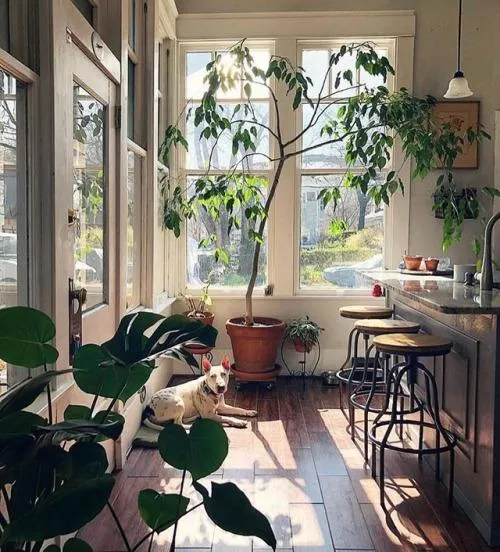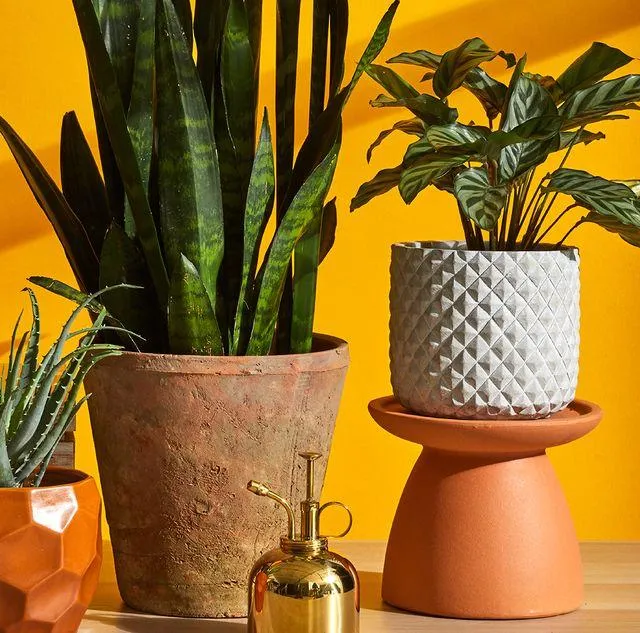Top Indoor Tree Options for Beginners
As a beginner gardener looking to start with indoor trees, you have quite a few great options to choose from. In this article, I’ll go over some of the best low-maintenance trees that thrive when grown inside the home. Whether you’re just getting into houseplants or want something elegant to spruce up your living space, these trees are a great starting point.
Chinese Evergreen (Aglaonema)
- One of the most popular and versatile indoor trees is the Chinese evergreen, also known as aglaonema. With their dark, glossy leaves in shades of green, pink, cream, and variegated patterns, they add vibrant color to any room.
- Chinese evergreens adapt well to low and bright indirect light. They don’t mind lower light levels like other indoor plants and are quite tolerant of less-than-ideal conditions.
- Watering once every 7-10 days is usually sufficient for an aglaonema. Their leaves will start to droop when thirsty, signaling it’s time for a drink. Allow the soil to dry out between waterings.
From my experience, Chinese evergreens are very forgiving as beginner plants. They’re able to handle minor mistakes in care better than some more finicky houseplants. Even under less-than-optimal conditions, they continue growing beautifully for months or years.
Parlor Palm (Chamaedorea elegans)
The parlor palm makes a lovely indoor tree choice with its arching palm fronds and tropical appearance. Here are a few tips for caring for one:
- Provide partial to full shade and moderate watering every 7-10 days. Palms like humidity but will tolerate average indoor conditions.
- Soil should be well-draining potting mix. Let it dry slightly between waterings but don’t allow it to dry out completely.
- Occasionally mist leaves and use a humidifier if the air is very dry to prevent brown tips from developing on the fronds.
- Fertilize monthly in spring and summer with a balanced houseplant fertilizer diluted to half the strength recommended on the label.
The parlor palm grows at a steady pace but remains relatively compact, making it perfect for beginners. With its graceful fronds and tropical vibe, it adds life to any space.
Dwarf Umbrella Tree (Schefflera arboricola)
Also called the dwarf schefflera or minima tree, the dwarf umbrella tree is another great indoor tree option for new gardeners. Here are the basics:

- Thrives in medium to bright indirect light and temperatures above 60°F.
- Water when the top inch of soil is dry. Leaves will droop when thirsty but perk back up after watering.
- Fertilize during active growth periods in spring and summer.
- Prune occasionally to maintain its bushy shape and prevent legginess.
- Tolerates a wide range of conditions making it very low-maintenance.
Despite its more rapid growth compared to other indoor trees, a dwarf schefflera still stays quite compact, maxing out around 4-5 feet tall. Its leathery leaves gracefully arching from the branches create an elegant tropical statement piece perfect for any space.
From my experience, umbrella trees are very versatile and resilient. I’ve seen clients’ specimens outgrow neglect for months due to vacations or busy periods. They bounce back easily with improved care.
Dwarf Date Palm (Phoenix roebelenii)
With its slender dark green fronds radiating from its crown, the dwarf date palm lends a regal air. It makes a charming indoor tree option with just a bit of know-how:
- Provide temperatures above 60°F and medium to bright indirect light for best growth.
- Water whenever the top inch of soil feels dry. Let excess water drain from the saucer.
- Tolerates dry indoor air better than other palms when well-watered.
- Fertilize in spring and summer for lush growth.
- Prune off any brown frond tips on occasion for a fuller look.
Thanks to its compact size maxing out under 6 feet, the dwarf date palm fits well in most homes and apartments. Its graceful form is quite statuesque, almost like a work of art! With minimal care requirements, it’s a wonderful option for palms.
Jade Plant (Crassula ovata)
No list of good indoor trees for beginners would be complete without mentioning the jade plant. Here’s a brief primer:

- Thrives in medium to bright indirect light and temps above 50°F.
- Only water when soil is dry 1-2 inches deep, about every 1-2 weeks. They’re prone to root rot.
- Let soil dry out slightly between watering and provide excellent drainage.
- Fertilize in spring and summer, then minimize water/fertilizer in winter.
- Snip off flowers/seed pods that form to encourage bushy growth.
Jade plants are tough as nails! From my experience, they’re super resilient and practically impossible to kill – even after severe underwatering or sunburn. Their unique pebble-like leaves make them a cool conversation piece. Try starting with a small jade cutting to learn basics.
Dwarf Rubber Tree (Ficus elastica ‘Tineke’)
Last but not least, the dwarf rubber tree offers an elegant upright form ideal for indoor gardening beginners. Here are some growing tips:
- Thrives in medium to bright indirect light and temps above 60°F. Avoid drafty spots.
- Soil should be well-draining potting mix. Water when top inch feels dry.
- Rubber trees are sensitive to fluoride and mineral buildup in hard water. Use distilled or filtered water to prevent leaf drop.
- Fertilize in spring and summer then reduce fertilizer in fall/winter.
- Prune to maintain shape or propagate new plants from cuttings.
Compared to regular ficus elastica, the ‘Tineke’ cultivar stays quite compact under 5-6 feet tall indoors. Its dark green leaves provide excellent texture and contrast. Rubber trees are easy to care for once you grasp their basic needs.
Hope this overview of low-maintenance indoor trees was helpful for beginners! Feel free to ask if you need any clarification on care requirements for a particular tree. Finding the right plant is half the battle – the rest is enjoying its growth. Happy planting!
Best Indoor Trees for Beginners
| Tree | Size | Light Needs | Care Level |
|---|---|---|---|
| Snake Plant | Tall, upright | Low to medium light | Very low maintenance |
| Spider Plant | Tall cascading | Medium to bright light | Low maintenance |
| Chinese Evergreen | Medium, bushy | Medium to bright indirect light | Low maintenance |
| Pothos | Vining | Low to bright indirect light | Very low maintenance |
| ZZ Plant | Medium, deep green | Low to bright indirect light | Very low maintenance |
FAQ
- What types of indoor trees are best for beginners?
Basically, the most forgiving indoor trees for novices are things like Chinese evergreen, snake plant, pothos, or ZZ plant. They don’t require a ton of sunlight and aren’t too picky about water.

- How much light do indoor trees need?
Indoor trees need varying levels of light. Some that do well in low light are Chinese evergreen and snake plant. For medium light, try a pothos or dracaena. Trees like ficus or money tree want bright indirect sunlight. You gotta find the right match for your space!
- How often should you water indoor trees?
Watering frequency relies on the species and growing conditions. As a general rule, trees in smaller pots will need water more than those with larger root balls. Check the soil before watering—if the top inch is dry, it’s thirsty. Snake plants are pretty forgiving if you forget every once in a while.
- What is the lowest maintenance indoor tree?
I’d say the snake plant is the easiest—those suckers can go weeks without water! ZZ plants are also pretty tough. Both thrive on neglect. But is neglecting plants too much? Even low-maintenance trees deserve some love.
- Do indoor trees need fertilizer?
It depends. Most houseplants do fine without fertilizer for quite a while, especially if repotted annually with fresh soil. Trees in smaller pots may benefit more from occasional feeding during growth periods in spring and summer. Too much urea can apparently be pretty stinky!
- How do you prevent insects on indoor trees?
Sanitation is key to avoiding pests—clean up fallen leaves and scrub the pot exterior to remove eggs and larvae. You can also try mixing a little dish soap into water and spraying the plant weekly as a natural preventative. Maybe these woodlice on my ficus aren’t so bad after all?

- What is the most difficult indoor tree to care for?
Fig trees, orchids, and some dwarf fruit trees can be challenging for novices. They demand more specific requirements for water, light, and warm temperatures. Strong & resilient as it is, even the mighty fiddle-leaf fig has been known to defeat houseplant newbies on occasion despite its stunning appearance.
- What indoor trees add humidity?
Trees like ficus, dracaena, pothos and peace lily are so-called “humidity lovers” that can tolerate damp indoor conditions. Putting some of these near a fish tank or pebble water tray may up the humidity and keep them happier, at least according to that plant blog I was reading. Unless of course it was joshing me!
